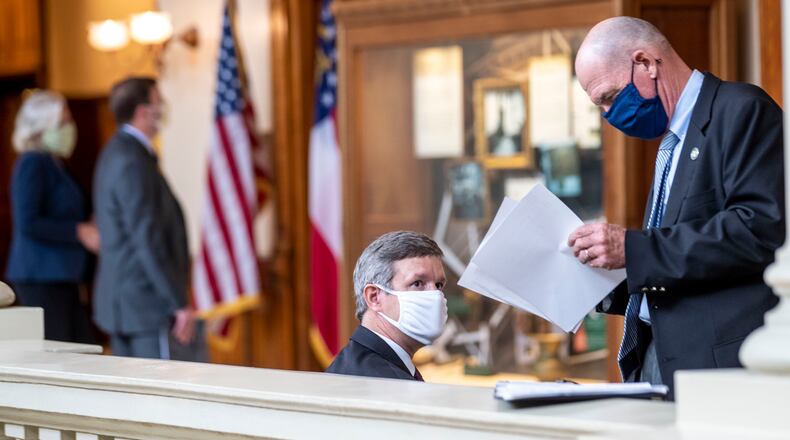Next year’s state budget proposal includes an extra $66 million for Georgia’s massive teacher and university pension system to keep it on solid financial footing.
But after not meeting its assumed rate of investment return in fiscal 2020 — which ended June 30 — the more than $90 billion Teachers Retirement System has made a strong recovery during the COVID-19 pandemic, as did the investment markets it relies on to make sure it can pay pensions to 137,000 former educators.
A similar program that provides pensions to 50,000 state employees - the Employees Retirement System - saw a similar bounce back.
Buster Evans, executive director of the TRS and a former school superintendent, told a legislative retirement committee Tuesday that the teacher system saw a return on investments in 2020 of about 15%, which is pretty close to the return for the S&P 500-stock index.
“We are glad we had a V-shaped recovery,” Evans said.
That’s good news for a system relied on by more than 400,000 former and current educators to provide retirement benefits.
The system has had its ups and downs in recent years, with the state having to make huge contributions at times to keep the books in good shape. Those taxpayer contributions have prompted Republican lawmakers to raise the possibility of making changes to the pension programs, something teacher groups have fought off.
When the markets plummeted at the beginning of the pandemic, the system’s assets lost billions of dollars in value.
“There was a sick feeling in my stomach,” Evans told the TRS board last year.
But the TRS has ridden the wave of market gains since then.
The state and local school systems contributed more than $2 billion to the TRS last year. Employees — educators and staff — pay into it as well. And it counts on an annual return on investments of about 7%.
Education groups say the pension is a vital tool to recruit and retain teachers. Most companies don’t offer pensions to employees anymore, and neither does state government when it hires new agency staffers.
Evans said the average pension is about $40,000 a year and the TRS paid out $5.2 billion in benefits last year, so it has a big impact on the state’s economy.
The TRS executive director told lawmakers that while there was an increase in the number of teacher retirements in the second half of 2020, the system didn’t see the wave — brought on by the COVID-19 pandemic and changes in their jobs — that some other states experienced.
He said the system has seen an increase in the number of beneficiaries who died, which could be attributable to COVID-19 since a disproportionately high percentage of coronavirus-related deaths have occurred among those 65 and older.
Still, Evans said, there are plenty of former teachers hanging in there. He told lawmakers there are 8,590 retirees who are over age 85 receiving TRS pensions. And 81 retirees over the age of 100 receive pensions.
Of the centenarians, only one of the 81 is a man, he noted.
About the Author
Keep Reading
The Latest
Featured



